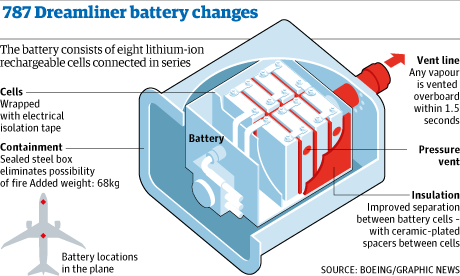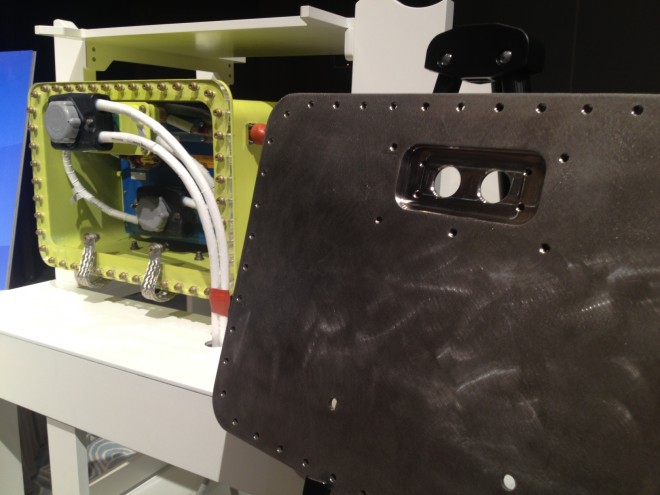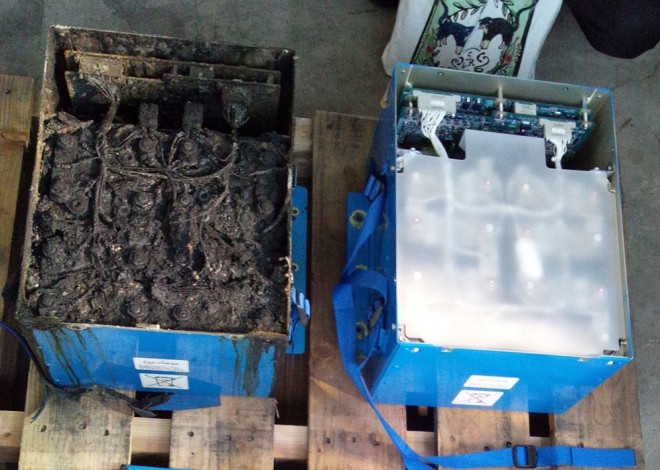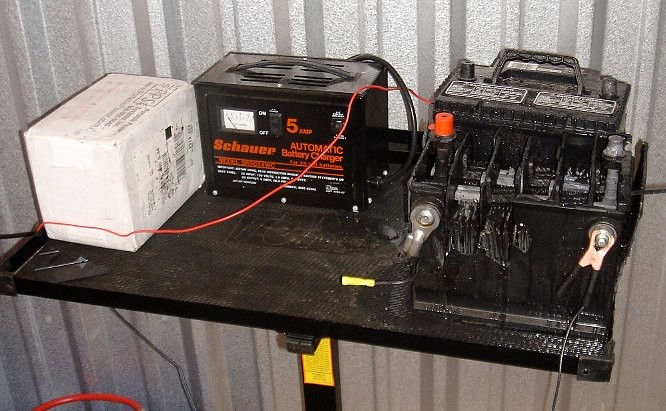Checkout_my_Six
Touchdown! Greaser!
you should be fine....
FYI, read about EarthX batteries on their website. They differentiate between aviation and their other batteries by adding redundant safety controls
Let's just say.....there's a reason that all the Li batteries on the 787 are contained in an armor proof-vented box.Check my Six almost never offers a shred of information. She/he just takes chips at other people's comments. Anyone else notice that? That's the internet.
What is a "proof-vented" box?Let's just say.....there's a reason that all the Li batteries on the 787 are contained in an armor proof-vented box.
Moooo.....

You missed my point entirely which is the phrase "proof-vented" has no inherent meaning. Perhaps you meant to say a "fire containment box"?dat....
vs....dat

perhaps you are picking nits?You missed my point entirely which is the phrase "proof-vented" has no inherent meaning. Perhaps you meant to say a "fire containment box"?
Perhaps you in denial?perhaps you are picking nits?
Or statistics. Like I said, I did my due diligence. You guys should do yours when you build your own airplanes, too. My plane, my choice, my reasons. I'm sorry I took the time to share them.
Quite frankly one failure is too many in an aviation application, particularly if it's INSIDE the cabin in an unvented situation. It's your plane and your choice, but to sit there and say its perfectly safe technology is completely ignorant and misleading.1 failure report from three years ago with no history of how the battery was charged or used. If I can counter that with 20 pireps from guys I know who've used EarthX for those three years which should I favor?
Tell me what you know, not what that one internet story says. How many failures have occurred in your circle of friends? How many successes? How much effort have you put into discovering what causes failures? Do those causes apply to your airplane? See where I'm going with this?
There's no alternative to an engine, so those risks are assumed and mitigated. There's a safe reliable alternative to Lithium Batteries that we've been using for a hundred years. So if you could reduce risk, why would you not?CMS isn't very good at reading, either. One failure among several dealers' total sales. And that failure was explained easily. You guys are fear mongers. I had an engine blow a rod in flight yet I still fly. Using your thinking I should give up aviation. In my thinking I'll just manage the risk. Like I do with literally everything in life.
There's a safe reliable alternative to Lithium Batteries that we've been using for a hundred years. So if you could reduce risk, why would you not?
Like I said its your choice, I'm just arguing the scientific point of view.

There's no alternative to an engine, so those risks are assumed and mitigated. There's a safe reliable alternative to Lithium Batteries that we've been using for a hundred years. So if you could reduce risk, why would you not?
With a lead-acid battery usually the ignition source is external. Perhaps the most common event is connecting jumper cables directly to the battery immediately after depleting the charge, e.g. generating a bunch of hydrogen. The negative charge lead clamped to the post is a dead give away here. If ya gotta connect to the post use the little plug in doo-hicky and turn the charger on after hooking up everything. And even then use PPE.To stay in the scientific mode, its not like lead acid batteries never fail dramatically:

I thought that Shorai and EarthX had the same LiFePo chemistry, possibly even the same exact cells at least in some revisions.And since the Shorai battery was half the price of an earthX, I actually tested one to self destruction by overcharging it in a controlled condition - I know exactly what it's thermal runaway characteristics look like (swelled case, some smoke, no fire - completely unlike a LiPo failure).
I thought that Shorai and EarthX had the same LiFePo chemistry, possibly even the same exact cells at least in some revisions.
Never, ever, EVER connect any kind of lithium battery to a charger or a regulator designed for lead acid batteries.
What is the exact issue?
I have lithium iron batteries in two of my motorcycles, and routinely hook them up to a 4-gang BatteryTender in my garage. To no apparent ill effect.
Not arguing, just wondering.
A battery tender (usually) is a "smart charger" and won't push to much into the battery. An Alternator\regulator or a standard battery charger (dumb chargers) doesn't monitor the battery very effectively. You tell it put out 10 amps, and it puts out 10 amps. Resistance in the battery increases, causing more heat, until it detonates.What is the exact issue?
I have lithium iron batteries in two of my motorcycles, and routinely hook them up to a 4-gang BatteryTender in my garage. To no apparent ill effect.
Not arguing, just wondering.
What is the exact issue?
I have lithium iron batteries in two of my motorcycles, and routinely hook them up to a 4-gang BatteryTender in my garage. To no apparent ill effect.
Not arguing, just wondering.
The performance and economics of the 787 speak for themselves; the dash 8 variant can take a full load of pax immediately to FL410 and easily cruise at Mach 0.86 with the fuel burn of a much smaller aircraft.
They are nifty.
Not my comment, but from folks in your biz, who say the 767 was much cheaper up-front and did the same job more profitably with better dispatch rates... but everyone's enamored with the 787... so...
I didn't look into their claim, but wondering what you think.
The 787 is truly a money printing machine on long "thin" routes. If you're flying it from the east coast to say London or even Paris you might as well stick with the tired old 767. On longer legs like United's DEN - NRT and LAX - SYD the 787 really shines. The 787 is beating out the Airbus 350 in terms of efficiency (even though I like Airbus cockpit better).
The 767 does not have the range or speed and it has a higher overall fuel burn than the 787. When I'm in a North Atlantic track in my 777 at FL370 cruising at Mach .83 and I see something on the TCAS passing me up at FL410 in my same track I used to think Citation X - now most likely it's a 787.
Makes sense. These guys were saying that even a new 767 would be 1/3 the acquisition cost. I suspect they were talking old pricing vs today, but I'm not up on what airliners run at the mini-mart these days... pretty sure my credit card won't swipe that high.
Well just keep in mind a few years ago fuel was expensive and capital was cheap. So buying new fuel efficient aircraft looked good. Now with the advent of "Shale 2.0" and increased costs to borrow capital suddenly buying used airframes looks good.
I did the webinar. Very informative. It convinced me how little some guys who oppose lithium batteries really know. I'm more convinced than ever that I made the right choice for weight and performance. And safety!
